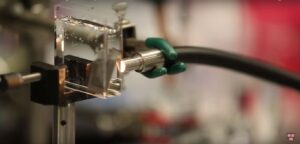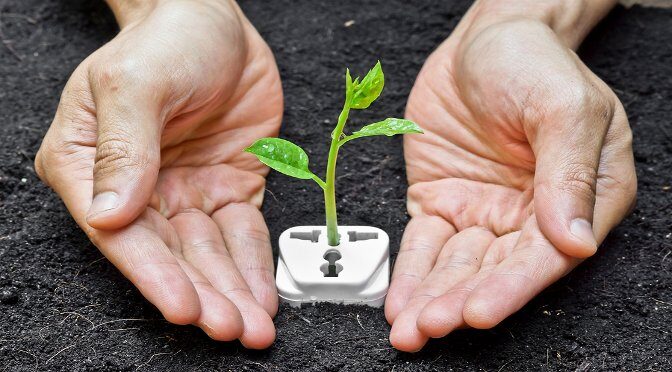“If you think about it, photosynthesis is amazing. It takes sunlight, water, and air — and then look at a tree. That’s exactly what we did, but we do it significantly better because we turn all that energy into fuel.” ~Daniel Nocera
Photosynthesis powers nearly all life on earth. The evolution of photosynthesizing organisms 3.4 billion years ago was the beginning of natural processes that have led to plants, animals and ultimately us. It is one of the most efficient energy creation processes in the natural world. However, two teams at Harvard University, led by a chemist and a biologist, may have finally created a manmade improvement on this fundamental process.
The Bionic Leaf

Together Daniel Nocera and Pamela Silver and their teams have invented a bionic leaf that produces energy ten times more efficiently than photosynthesis in plants. The ‘leaf’ is more accurately described as a living battery, although it was called a leaf as a tribute to the perfect marriage of chemistry and biology that created it.
The device uses solar energy (like a plant) from a photovoltaic panel to power the chemical reaction, which splits water from a compound into the individual elements oxygen and hydrogen. Once this reaction has occurred, microbes within the mechanism feed on the hydrogen and convert carbon dioxide into alcohol, which can later be used as fuel.
Although the system has been proven to be able to create fuel Silver sees the uses of the ‘leaf’ as much farther reaching. ‘The beauty of biology is it’s the world’s greatest chemist — biology can do chemistry we can’t do easily,’ she said. ‘In principle, we have a platform that can make any downstream carbon-based molecule. So this has the potential to be incredibly versatile.’
This bionic leaf is by no means the first the team put together. The current version is an improvement on Nocera’s original design that he created in 2015. The original successfully produced 216 milligrams of alcohol fuel per litre of water but its nickel-molybdenum-zinc catalyst, which split water into two elements, also poisoned the microbes.
After going back to the drawing board, they discovered that a catalyst made from an alloy of cobalt and phosphorus was a more efficient and ‘biologically compatible’ alternative. The new system was proven to produce 60 grams of fuel for every 130 grams of carbon dioxide; a figure that is approximately ten times higher than natural photosynthesis.
‘This is a true artificial photosynthesis system,’ Nocera said. ‘Before, people were using artificial photosynthesis for water-splitting, but this is a true A-to-Z system, and we’ve gone well over the efficiency of photosynthesis in nature.’
As an end to end system, the bionic leaf could become the answer to the question of sustainable energy. The system is expensive to produce at present, and is a few years away from working out all of the issues, but it is an enormous leap forward. If the technology continues to improve and research is maintained even our cities could be full of leaves – just not ones you’d recognize right away.
This article was written by The Hearty Soul. The Hearty Soul is a rapidly growing community dedicated to helping you discover your most healthy, balanced, and natural life.

